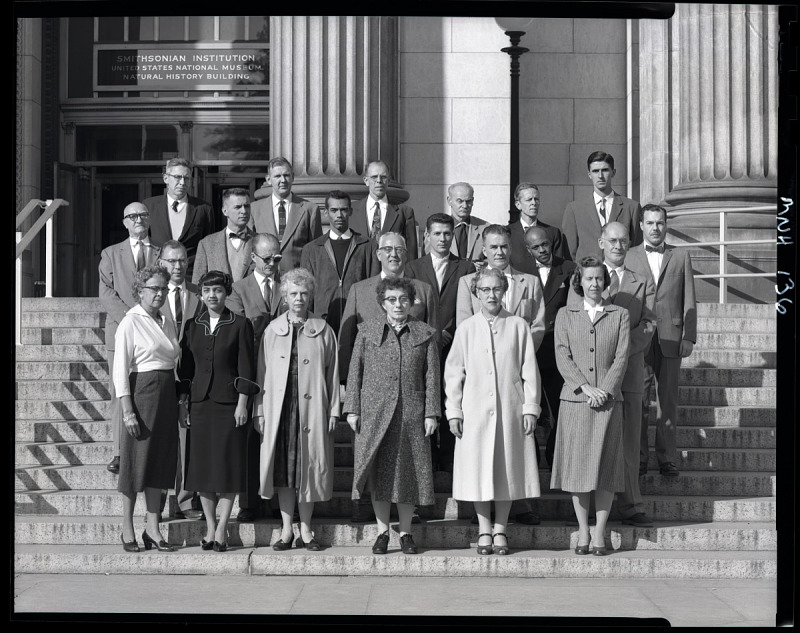Making Museum Professionals, 1850-the present
by Dr. Kate Hill
Deputy Head of School of Humanities and Heritage
Who gets to work in museums, in what sort of jobs, and with what sorts of prospects? Over the last ten years I’ve looked at the history of women https://manchesteruniversitypress.co.uk/9780719081156/ and men https://onlinelibrary.wiley.com/doi/abs/10.1111/1468-0424.12514 working in museums, and I’ve realised how much gender and class affected not just whether people got jobs in museums, but what jobs they got, how much they were paid, and what their career prospects were. I’ve also come across work examining how sexuality could impact on those working in museums in various roles: a lesbian typist in the National Gallery in the 1940s who lost her job https://www.tandfonline.com/doi/abs/10.1080/19369816.2018.1529268?journalCode=ymhj20 , the artist/curating couple Margot Eates and Hartley Ramsden who found the Second World War opened up possibilities for them professionally which they wouldn’t otherwise have had https://www.youtube.com/watch?v=QWn-N782_Ws , and Trevor Thomas, an innovative curator at Leicester Museum, considered to be a possible future Director of the National Gallery, who was found guilty of a public decency offence in a public lavatory in 1946 and lost his job and career https://germanexpressionismleicester.org/leicesters-collection/the-origins-of-leicesters-expressionist-collection/trevor-thomas/ . It goes without saying that in the period I work on, c.1850-1950, race was a hugely important structuring factor in museum work; curating was exclusively white but people of colour made enormous and systematically hidden contributions, especially to collecting, as discussed here https://www.nhm.ac.uk/discover/news/2019/july/are-natural-history-museums-inherently-racist.html. The question of what counts as ‘work’, and as a profession or career emerges from this sort of investigation – museums have always contained or relied on both ‘professionals’ and ‘amateurs’, but also contain large numbers of workers who are ignored. Fields such as cleaning and attending were also highly gendered.
All of this growing scholarship on the way museum work has been structured by and structures gender, class, race and sexuality coincides, of course, with contemporary campaigning to improve access to and diversity within museum professions. Curating is sometimes seen as a job for posh white people and there is clearly some truth in this. Not only that, but hierarchies within museum work structure the opportunities for people of colour, women and working-class people, so that the most prestigious roles go to white middle-class men, and the areas that marginalised groups work in are devalued.

This growing picture in the past and the present led to my current project with Dr Claire Wintle of Brighton University. We’ve been awarded a grant to organise a network called Making Museum Professionals, 1850-the present. Over the next two years we will organise three workshops to examine different aspects of this topic. The first, in May this year, is called Museum Work: Hierarchies and Barriers, Exclusion and Inclusion, and we’ll hear keynote contributions from Fiona Candlin, whose recent work has looked particularly at ‘amateur’ and volunteer-run museums from the 1960s to the present; from Tamsin Russell who is workforce development lead at the Museums Association; and from Errol Francis, CEO of Culture&. Subsequent workshops will look at how different careers and specialisms within museums have developed, from conservation to education; and at how international movement, of people and ideas, has affected museum work. The International Council of Museums was set up in 1946 but even before that global forces such as colonialism, and an exodus of Jewish and other curators from Germany to Britain and the US in the 1930s, were setting up certain patterns.
Throughout all this, we’re really concerned to bring historians into dialogue with museum practitioners. Certain aspects of inequality in museum work have proven tremendously resistant to change – the Museums Association recently published salary recommendations https://www.museumsassociation.org/app/uploads/2022/11/MA-Salary-Research-and-Recommendations-2022.pdf which social media responses suggested were way above ‘reality’, and exactly the same thing happened in the 1920s. Beyond the long-term structural nature of some of the problems, we are also hoping to think about how professionals and historians can work together methodologically and in terms of what sort of outputs meet the needs of our audiences and stakeholders. Watch this space!
To find out more about the project, visit our website at makingmuseumprofessionals.blog.lincoln.ac.uk, find us on Twitter – @makingmuseprofs and contact us at museumprofessions
Image credit: Smithsonian Institution Department of Anthropology staff, 1959. Smithsonian Institution, https://www.si.edu/object/group-portrait-department-anthropology-staff-1959:siris_arc_397277